Vietnam does not make people think of sweets, by any means. In fact, you'll notice a lot of the same players in the Vietnam dessert scene: coconut, rice, bananas, preserved & sweetened dairy, and all types of fruit jellies.
This has much to do with what foods are able to grow in Vietnam, meaning that the differences between northern and southern Vietnamese desserts can seem subtle, but is definitely there.
There are some supportive players and a few surprises, sure, but this is a country still very much steeped in tradition. The desserts in Vietnam certainly reflect that desire to maintain tradition, as well as some of the beautiful places in Vietnam.
But I promise that even if you don't like any of the main players, there's something on this list for you. I've specifically chosen Vietnamese sweets with various flavors and ingredients, reflecting the various landscapes and traditions from the country, so graze away!
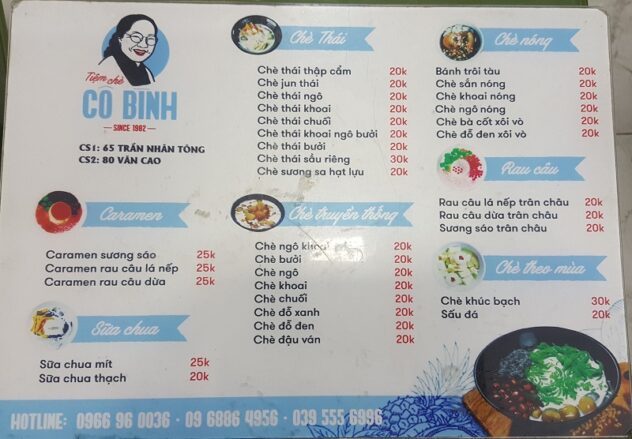
Jump to:
🇻🇳 About Vietnamese Desserts
As noted above, Vietnam's dessert scene can seem repetitive if viewed from afar. But the truth is multifaceted. Traditionally, Vietnamese people didn't really eat sweets, but this changed with the invasion of the French.
During the colonial period, French people insisted upon maintaining their habit of desserts after dinner, and this continued after their removal. While most Vietnamese people still don't eat dessert every night, it's a common enough craving that there are special desert restaurants dotting the main streets in any given city.
Like cafes, there are chains and mom & pop shops, but the best ones are consistently populated. You'll usually find tiny plastic chairs, and maybe some small tables if you're lucky. These open-air restaurants are marked by the word chè.
But not all desserts in Vietnam are called "chè," contrary to popular internet rumors. "Chè" is a word you'll see advertising a sweets restaurant, but more of then than not, the items they'll offer will not be of the chè variety.
Other types of sweets from these open-air restaurants include flans, rice-based treats, jellies, ice creams, and more. Some of the most common dishes vary depending on whether you get them in the north or south, and some are only coastal or otherwise regional. It's up to you to discover your favorites.
🍧 The Best Desserts From Vietnam
Kem Ống (Stick Ice Cream)

What is it? While relatively self-explanatory, these little treats are sticks of ice cream, formed in a long, thin mold. The most common flavors are coconut, mango, mint, durian, and strawberry, though it depends on the season.
While not overly sweet, these bars are incredibly delicious, and both portable & affordable!
Where To Find It: Central Vietnam, along the coast. I saw these ice creams, and their cousins (the rolled ice cream), in both Nha Trang and Hoi An.
You'll note that these are most common at the open-air markets in cities along the coast, though sellers may also appear at big tourist sites in the middle of the day.
Sinh Tố (Fruit Smoothies)

What is it? Well a smoothie is basically a drink that's made of fruit and ice, blended until smooth. It's often served with ice cubes in it, to keep it cool. Availability of flavors is quite seasonal in Vietnam, but it's easier each year to find certain popular flavors year-round.
I'd recommend mango, avocado, or passion fruit, especially if you can find ones with herbs included (my favorite combo is mango + mint). Smoothies aren't too sweet, so it's the perfect antidote to overly strong Vietnamese coffees.
Where To Find It: Smoothies are available across Vietnam, in restaurants, cafes, and roadside stands. Expect to pay more or less for quality based on the location at which you buy your smoothie!
Bánh Flan, Caramen (Creme Caramel)
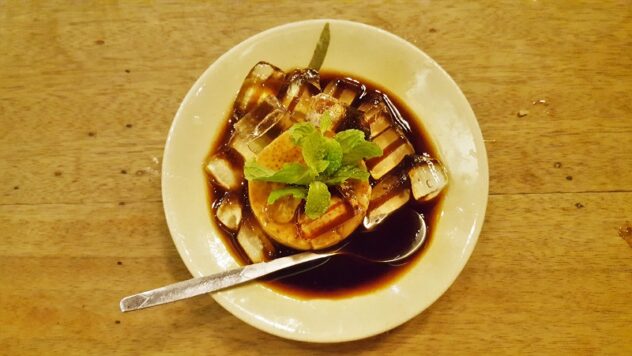
What is it? An import from the French colonization period, this dessert is the Vietnamese interpretation of a flan (egg-based custard). A thick slice or an individual flan caramel is served over ice, often in black coffee in the south.
The north serves a lighter and sweeter version, generally sans coffee. Some variations on the dish also add fruits and fruit jellies or coconut milk, but they're always iced.
Where To Find It: This dish is available across the country, though you may find it to be a bit different in each spot. Restaurants and open-air dessert cafes will be your best bet for finding it, though wintertime in the north you may find it to be a bit scarce!
Xí Mà (Black Sesame Soup)

What is it? This sweet black soup resembles squid ink more so than dessert, but it's quite the treat. The dish is originally from China, but has made a name for itself in central Vietnam, especially the version made by an elderly couple in Vietnam (aged 96 and 106!).
It's made with crushed black sesame seeds, coconut powder, sweet potato, tapioca, and brown sugar. Some recipes also add greens, but the flavor is overall mild and a little sweet (it could probably use some salt TBH).
Where To Find It: While you may be able to find xí mà in the occasional restaurant around Vietnam, it's a specialty of Hoi An. The soup takes very long to prepare from scratch, and is best eaten warm.
I recommend trying it at a small street food stall in Hoi An, or where we did, at the elderly couple's Hoi An Ancient House: 45/17 Tran Hung Dao Street.
Vietnamese Craft Chocolate
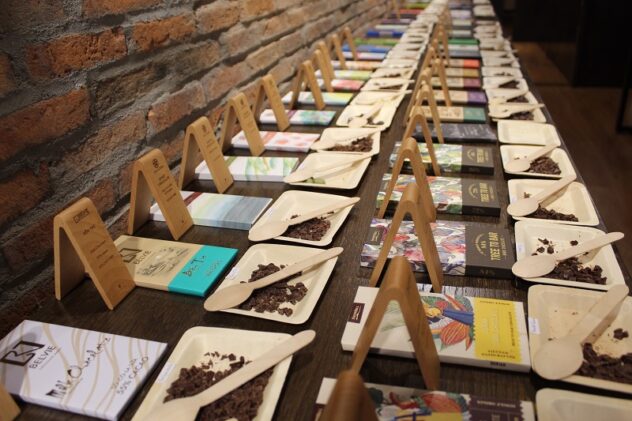
What is it? Chocolate is made by roasting, peeling, and grinding cacao beans, and over the last several years, cacao has become a thriving industry in Vietnam. There are over a dozen chocolate makers in Vietnam, from the south to the north, and there are many places where you can buy local chocolate.
I promise this is nothing like what you'd buy at convenience stores (though you can probably buy Marou in some convenience stores)!
Where To Find It: Look for dark chocolates with only the ingredients: cacao beans, sugar, and cocoa butter. While there are some chocolate cafes in Vietnam, you're most likely to find quality bars in a specialty shop in Saigon or Hanoi. Look at Vietnam Chocolate House in Saigon for the best selection.
Chè Ba Màu (3 Color Dessert)
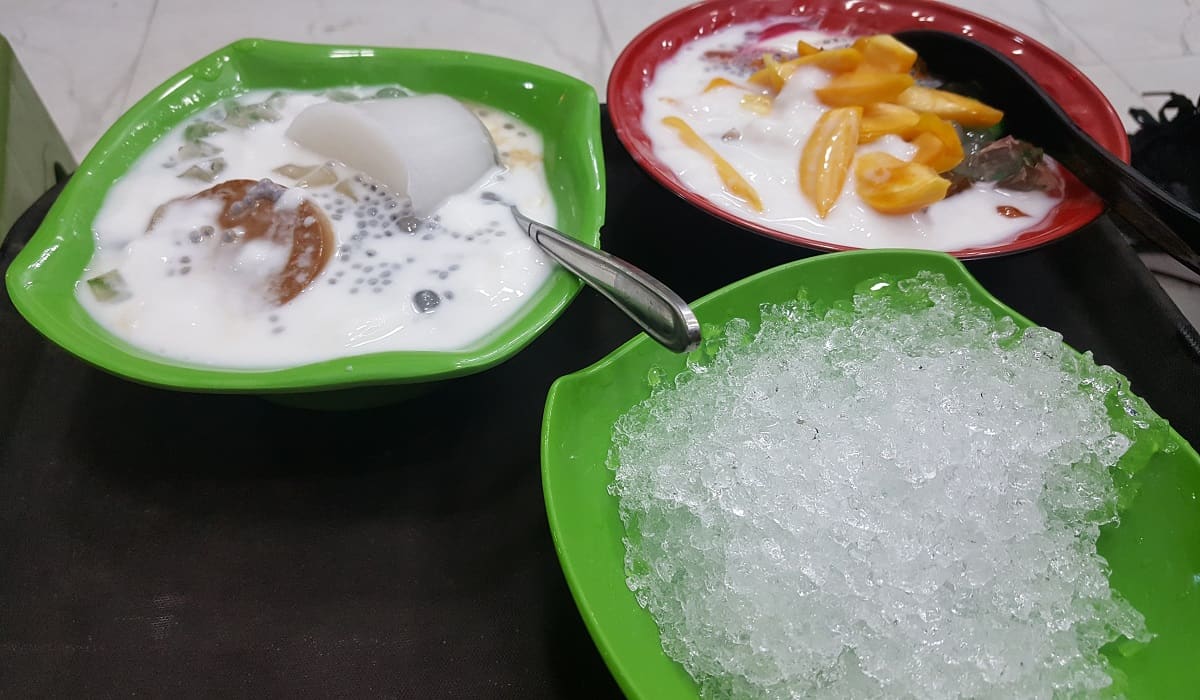
What is it? Falling into the very traditional desserts category, this chè is made with sweet beans, coconut milk, and fruit jellies. Its cousin, Chè Thái, is like Vietnamese halo halo (coconut milk and coconut rice with mixed fruit jellies, and often pieces of durian).
You'll be served Chè Ba Màu in a plastic cup, and it's usually consumed after meals or as a sweet snack, though it's not very sweet compared to other traditional desserts in Vietnamese.
Where To Find It: This is one of the most common Vietnamese desserts across the country, as all of the ingredients are relatively shelf-stable and portable. You can find this at roadside dessert stalls or in open-air chè restaurants, also available to go.
Chè Chuối (Banana in Coconut Tapioca Pudding)
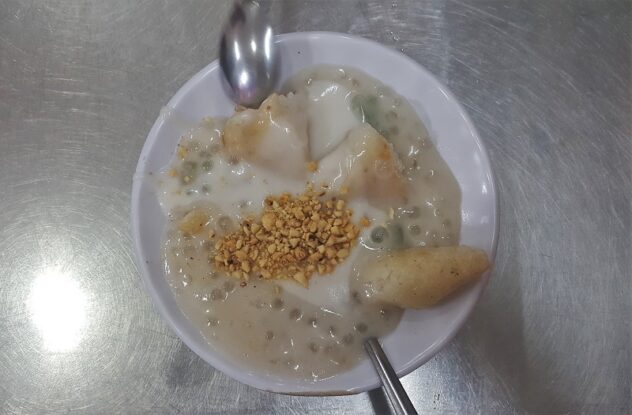
What is it? The base of this dish is a sweet tapioca pudding, while the star is the sticky rice-coated banana. If you see or try "Bánh Chuối Nướng," that's the same rice-covered banana as you'll eat in this dish.
The banana is heated over a charcoal grill, and then plopped into a small bowl of room-temperature pudding. Then they'll topped that with thickened coconut milk and a sprinkle of peanuts. It sounds a little strange, but it's delicious and not overly sweet.
Where To Find It: I saw this on menus across the country, but it seemed more popular in southern Vietnam. In the center and north of the country I saw more of the plain rice-covered bananas, which are good but not my favorite by themselves.
Both types of chuối desserts are types of street food, eaten either at stalls or open-air restaurants along a town's main drag.
Sữa Chua Nếp Cẩm (Sweet Sticky Rice & Yogurt)
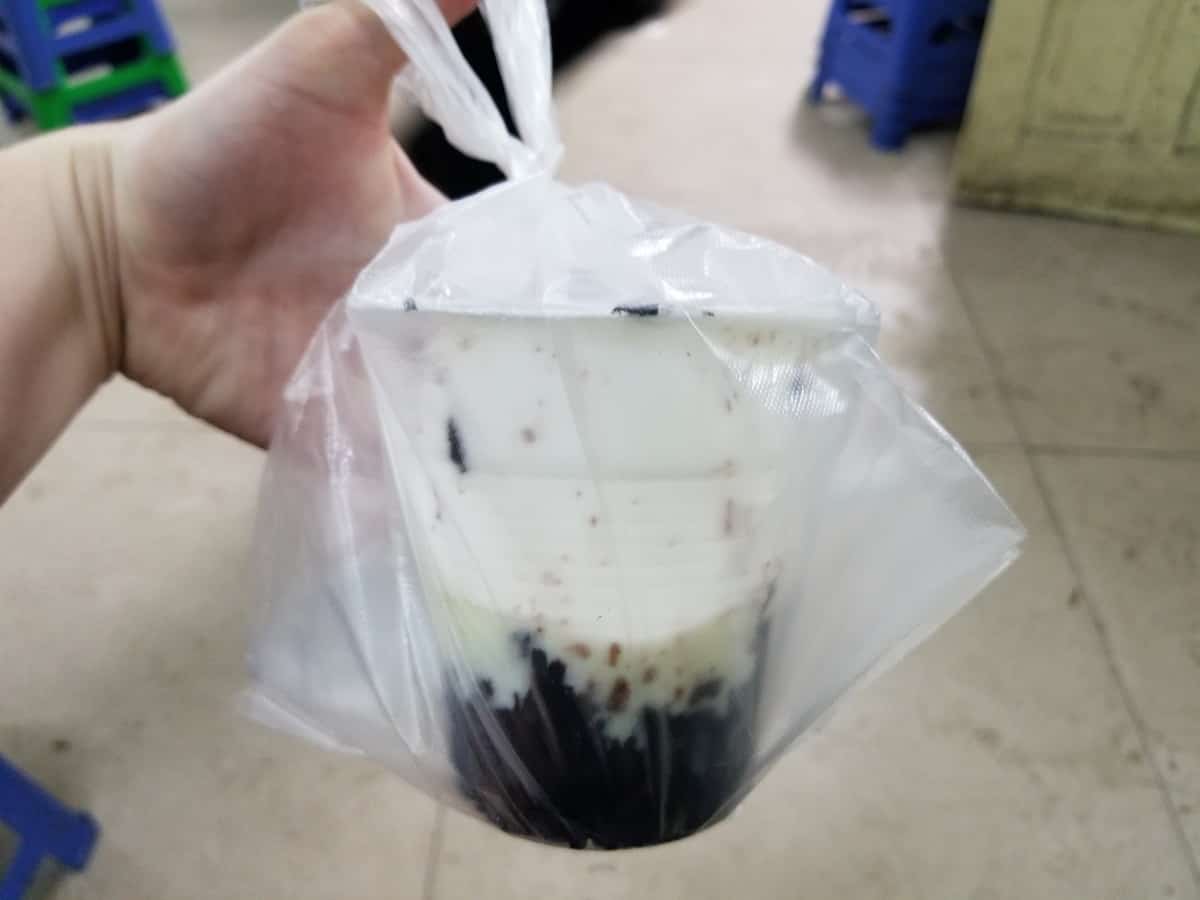
What is it? Bear with me, but this dish was initially described to me as fermented black rice topped with runny yogurt, served cold. Yet the play of the sweet, chewy rice with the melty, tangy yogurt is simply delightful.
When I first tried it, I actually got a to-go cup of it; it was that good. If you have the chance to add your own ice to the cup, be sure to let it cool off the yogurt and then sip the water before eating. It's not a very sweet dessert, but it's definitely worth trying if you're feeling the dearth of good milk desserts in Vietnam.
Where To Find It: While not an uncommon dessert, this wasn't the easiest to find. But if you do, it will be in a dessert restaurant along a main road rather than one of the roadside stands; look for the word "chè."
Kem Bơ (Avocado Ice Cream)
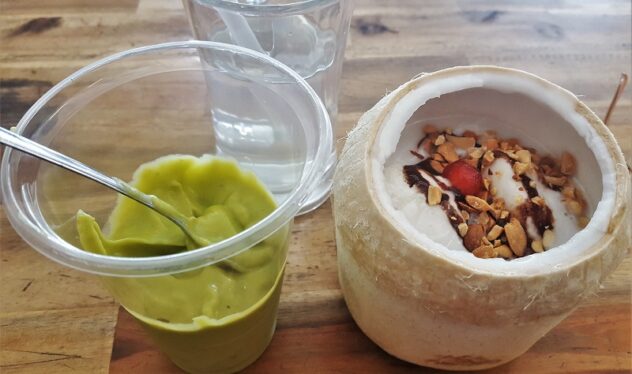
What is it? We had two versions of this dessert in Vietnam, the first one being made with an avocado smoothie (avocado blended with coconut water) and coconut ice cream, and the other made with a thicker avocado puree and vanilla ice cream.
Both versions are very creamy and moderately sweet, with some iterations better than others.
Avocado ice cream in Vietnam is usually not vegan, unlike versions I had in North America. An interesting alternative to the ice cream is avocado coffee, which more common in the springtime. That version of drinkable avocado does seem to be vegan, made with avocado smoothie and strong Vietnamese coffee.
Where To Find It: Avocado season is April to June, but the drink and the dessert are more common in the southern half of Vietnam. For a proper avocado ice cream or coffee, go to a restaurant specializing in avocado-based drinks, like Nari Avocado Cream in Da Lat City.
Just don't forget to stir the avocado cream and coconut water, or you may think you just got handed a mug of guacamole!
Sữa Chua Mít (Iced Jackfruit Yogurt)
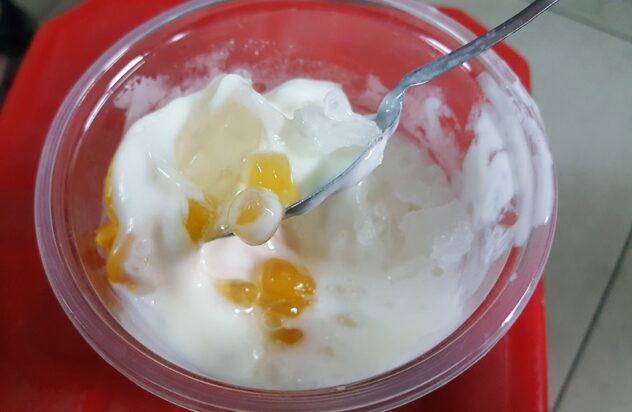
What is it? This is the Vietnamese version of fruit-on-the-bottom yogurt. Along the bottom of a big plastic cup is a heap of chewy, sweet fruit jellies, topped with a tangy, runny yogurt and coconut jellies & jackfruit pieces.
This is one of my favorite Vietnamese desserts, with various textures and a nice hot & cold temperature dynamic due to the crushed ice dolloped in to keep it cool. While it isn't super sweet, this is a delicious treat.
Where To Find It: This is a pretty common item on dessert shop menus, so just keep an eye out for it, though you're more likely to find it in an open-air restaurant rather than a street stall. "Mít" means jackfruit, which grows across the country, so to try other types of yogurt dessert, look for "Sữa Chua {fruit name in Vietnamese}."
Bánh Trung Thu (Mooncakes)

What is it? While these are technically a Chinese dessert, mooncakes are also common in Vietnam, Taiwan, Hong Kong, Malaysia, and Singapore. The treat is made to celebrate the autumn harvest festival, which takes place every fall, in accordance with the lunar calendar.
Cakes are usually a few to several inches in diameter, and I also saw some versions with minced chicken or pork inside. In Vietnam, mooncakes are usually filled with sweetened mung bean paste and an egg yolk, though some modern versions may use jam or chocolate.
The consistency of the cakes themselves is between bread and pound cake, and they aren't very sweet. Some versions may be flakier or a bit sweeter, but generally mooncakes are a dessert-style snack for celebrating the holiday with friends & family.
Where To Find It: Find Vietnamese mooncakes in bakeries and souvenir shops, though only seasonally, during the month prior to the holiday (which varies form year to year).
Some cafes and specialty shops will also have their own versions, like the one pictured above from Marou Chocolaterie in Saigon. If you visit outside of mooncake season, the durian-filled Bánh Bía has a similar consistency.
Cà Phê Trứng (Egg Coffee)
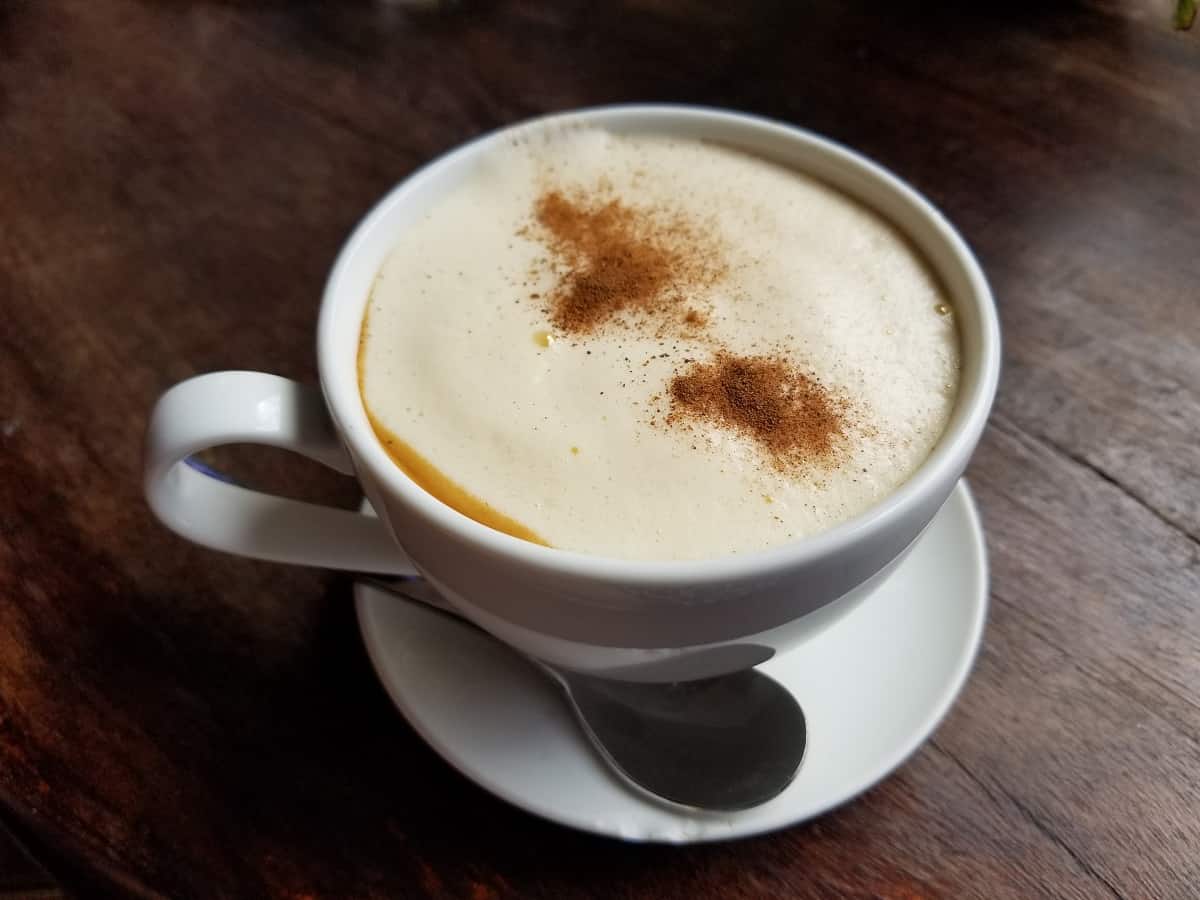
What is it? Vietnamese Egg Coffee is a beautiful wonder when done right, and an absolute mess when badly executed. The drink is served hot, and it's basically a shot of hot coffee topped with a sweet egg yolk meringue.
You're meant to mix it up into a fluffy sweet mess, and sip on it 'til it's gone. Some establishments will serve the drink in a bath of warm water, but it's usually because they're serving a larger portion at a much higher price; ambient temperature should keep the drink warm enough.
Egg coffee was supposedly invented as a way to make coffee creamy when the supply of milk became scarce after the war. If you've ever had iced coffee in Vietnam, you might think they never got milk again, but the egg version seriously took off and has thrived ever since, though it's not a daily indulgence by any means.
A delicious alternative is to the coffee version is Egg Chocolat, from either Maison Marou or a select few other coffee houses, especially in the north.
Where To Find It: Egg coffee originates in Hanoi, in northern Vietnam, and is most easily found up north. The best egg coffees we had were in Madam Khanh's in Hoi An (though they're better known for Bánh mì) and at Cafe Dinh in Hanoi, where a version of the drink is rumored to have first been created.
We tried about 10 different egg coffees over our trips, and those were by far the best, with a rich, chocolatey coffee and a smooth, sweet meringue. You'll find these delicacies in cafes and the occasional restaurant, though the best ones are served in cafes dedicated only to egg coffee.
Fresh Local Fruits
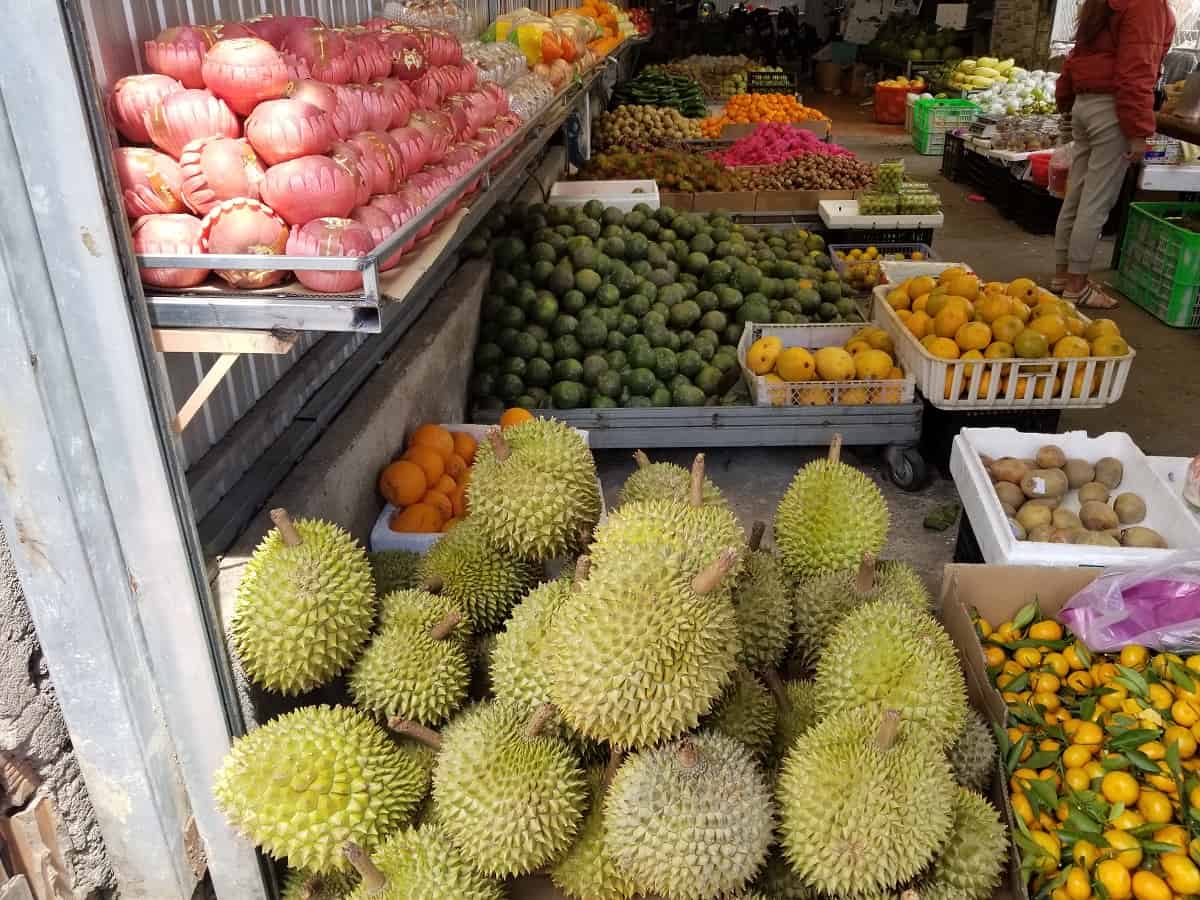
What is it? Fruits are different in every part of the world, with some countries having sweeter or more sour versions of seemingly similar produce.
The most unique fruits in Southeast Asia (Vietnam in particular) include: mangosteens, cacao fruits, big creamy avocados (perfect for smoothies), durian, rambutan, dragon fruit, and sugar apple. Each of these fruits has a different season, though luckily mangoes seem to be available year round.
Where To Find It: Since Vietnam has such a warm climate on average, fruits are available all year, as their seasons come up. For example, strawberries are in season from December to February, while durian season is May to July.
Fruits are sold in the open-air markets, cut up and packaged, or whole in the street, often by women balancing two baskets on a stick slung over their shoulders.
Some of these women make extra money by posing for pictures, so be sure to ask before snapping pics. Read more about Vietnamese fruits here.
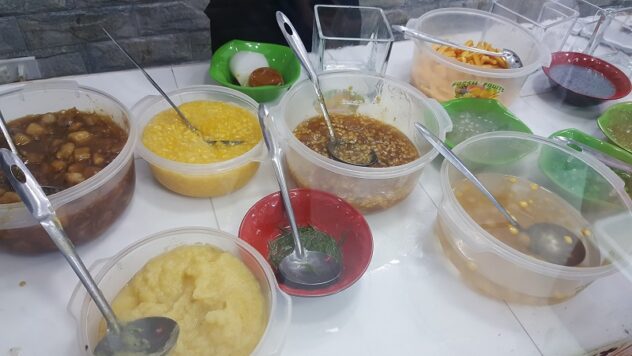
📚 Helpful Vietnamese Dessert Vocabulary
Xin chào: hello
Cảm ơn: thank you (informal)
Em ơi: over here (for calling servers over)
Một: one
Hai: two
Ba: three
Chè: a word representing desserts
Dừa: coconut
Sữa: milk (fresh, condensed)
Bánh: grain-based (often represents white bread, but could also be corn, barley, or any other grain)
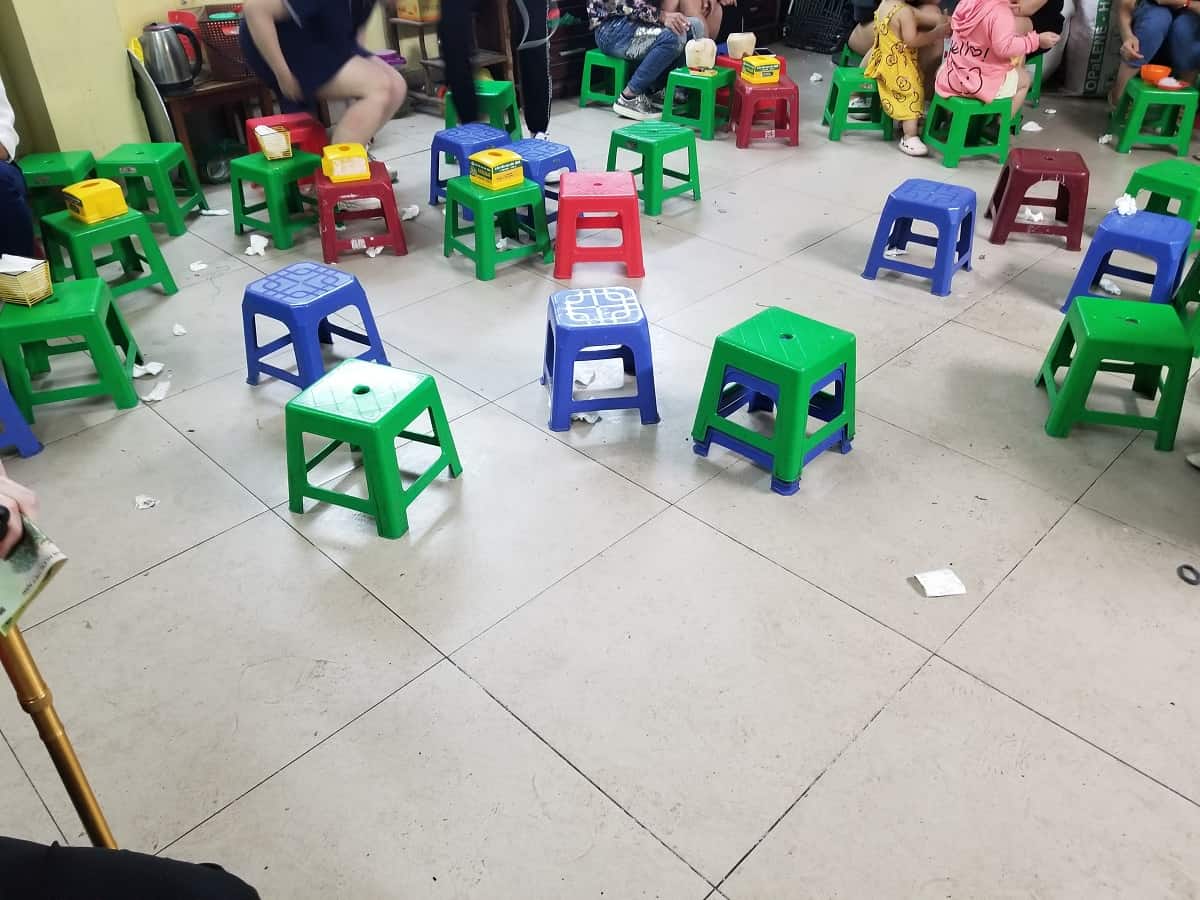
🙋🏼♀️ Frequently Asked Questions
Yes, Vietnamese people do enjoy sweets, and they're actually a pretty integral part of their cuisine. Traditional Vietnamese desserts are often less sweet than Western ones, and tend to incorporate ingredients like rice, beans, and fresh fruit, but it varies by region.
Arguably the most popular Vietnamese dessert is "chè," a term that refers to various sweet soups, puddings, or beverages that can be served hot or cold. Varieties of chè can include ingredients like mung beans, black-eyed peas, tapioca pearls, jelly, and fruit.
Vietnam doesn't have an official national dessert, but one of the most beloved national treats is a "chè," a term that refers to various sweet soups, puddings, or beverages that can be served hot or cold.
The most popular cake in Vietnam varies by region and personal preference, but "bánh bò" (a spongy rice cake), "bánh chuối" (a banana cake), and "bánh flan" (Vietnamese crème caramel) are some of the most widely enjoyed.
📖 Recipe

13 Unique Vietnamese Desserts
Equipment
- Whisk
- Spatula
- Mixing Bowl
- Electric Mixer
- Sauce Pan
Ingredients
Instructions
- Choose a recipe that appeals to you.
- Gather the ingredients.
- Follow the instructions, then enjoy!
Which of these Vietnamese desserts makes you most want to hop on a plane to Hanoi?













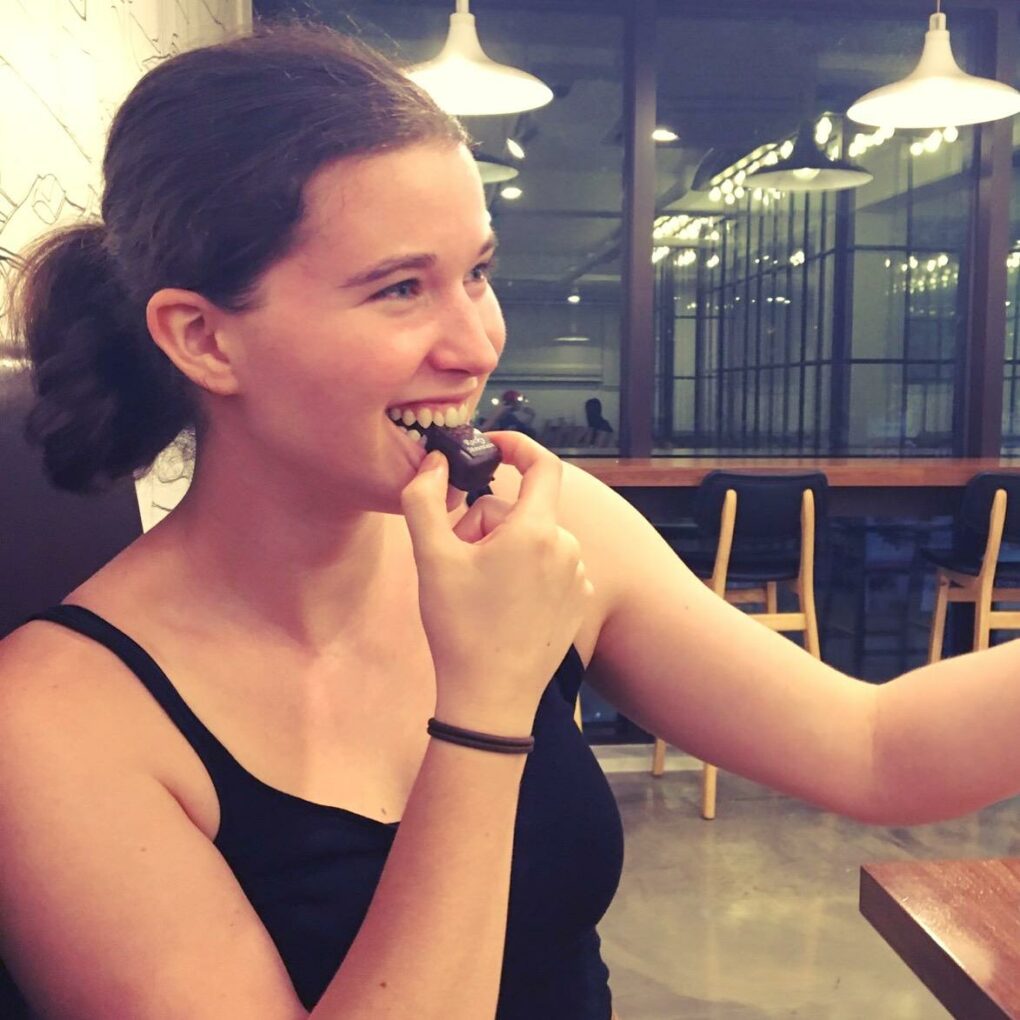
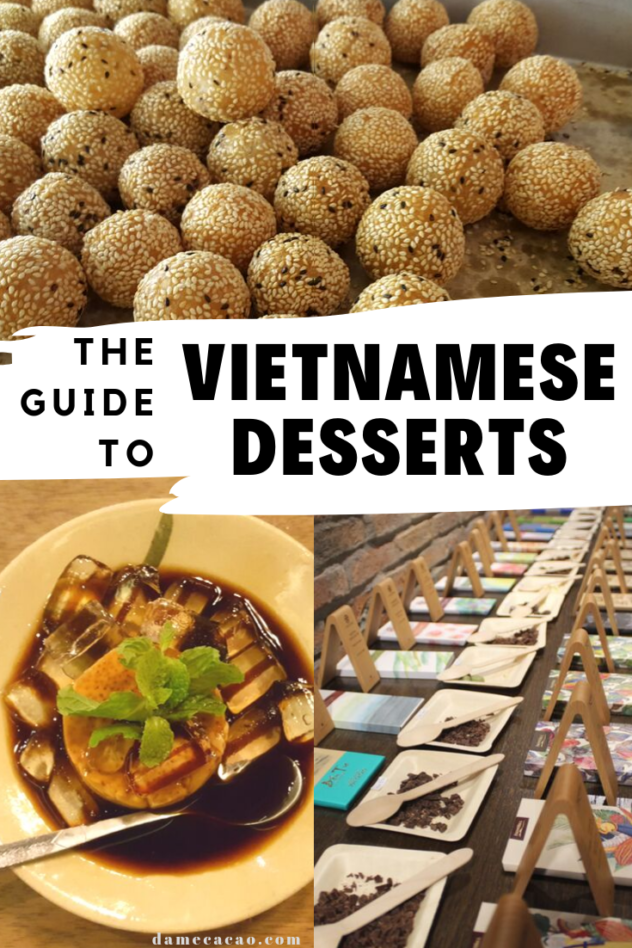
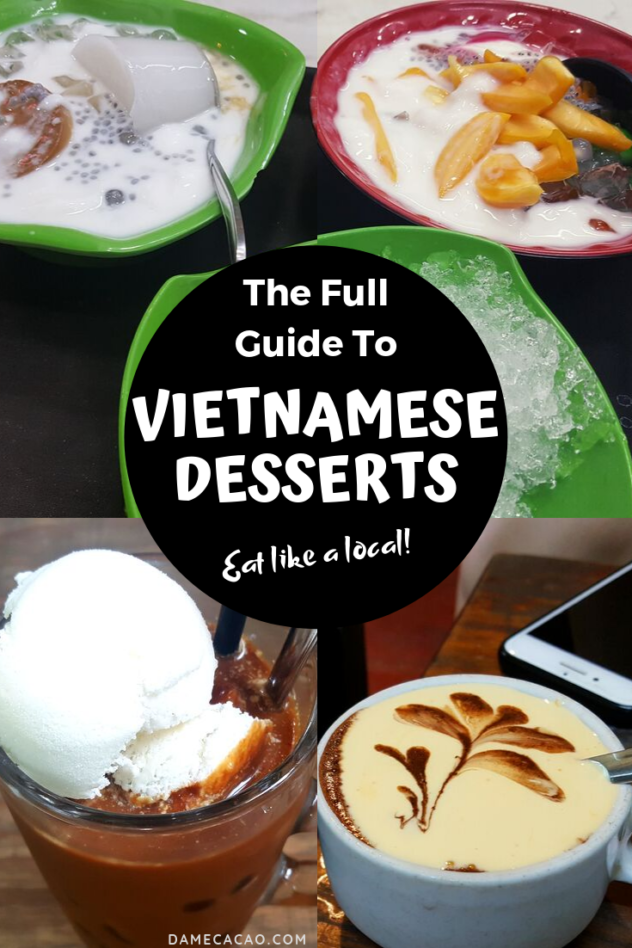



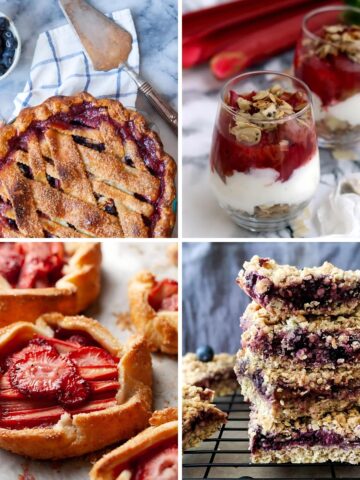
Comments
No Comments